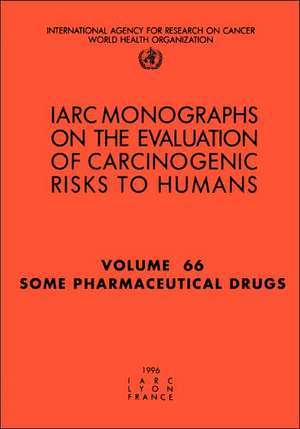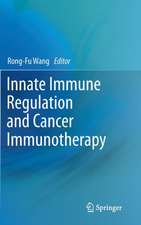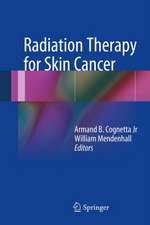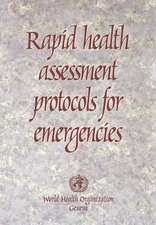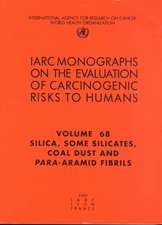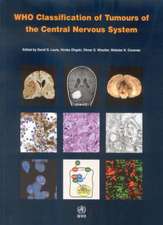Some Pharmaceutical Drugs Volume 66: IARC Monographs on the Evaluation of Carcinogenic Risks to Humans (Paperback), cartea 66
Autor International Agency for Research On Can, Iarc, Whoen Limba Engleză Paperback – 30 noi 1996
Din seria IARC Monographs on the Evaluation of Carcinogenic Risks to Humans (Paperback)
-
 Preț: 358.62 lei
Preț: 358.62 lei - 5%
 Preț: 334.65 lei
Preț: 334.65 lei - 5%
 Preț: 340.13 lei
Preț: 340.13 lei - 5%
 Preț: 346.54 lei
Preț: 346.54 lei - 5%
 Preț: 353.31 lei
Preț: 353.31 lei - 5%
 Preț: 334.65 lei
Preț: 334.65 lei - 5%
 Preț: 352.59 lei
Preț: 352.59 lei - 5%
 Preț: 340.85 lei
Preț: 340.85 lei - 5%
 Preț: 341.99 lei
Preț: 341.99 lei - 5%
 Preț: 331.18 lei
Preț: 331.18 lei - 5%
 Preț: 349.84 lei
Preț: 349.84 lei -
 Preț: 358.03 lei
Preț: 358.03 lei - 5%
 Preț: 349.48 lei
Preț: 349.48 lei - 5%
 Preț: 340.13 lei
Preț: 340.13 lei - 5%
 Preț: 351.50 lei
Preț: 351.50 lei - 5%
 Preț: 341.42 lei
Preț: 341.42 lei - 5%
 Preț: 340.33 lei
Preț: 340.33 lei - 5%
 Preț: 335.00 lei
Preț: 335.00 lei - 5%
 Preț: 348.76 lei
Preț: 348.76 lei - 5%
 Preț: 339.23 lei
Preț: 339.23 lei - 5%
 Preț: 440.56 lei
Preț: 440.56 lei - 5%
 Preț: 451.52 lei
Preț: 451.52 lei - 5%
 Preț: 361.83 lei
Preț: 361.83 lei - 5%
 Preț: 464.34 lei
Preț: 464.34 lei - 5%
 Preț: 467.08 lei
Preț: 467.08 lei -
 Preț: 47.64 lei
Preț: 47.64 lei - 5%
 Preț: 456.48 lei
Preț: 456.48 lei
Preț: 346.90 lei
Preț vechi: 365.16 lei
-5% Nou
Puncte Express: 520
Preț estimativ în valută:
66.39€ • 72.09$ • 55.77£
66.39€ • 72.09$ • 55.77£
Carte tipărită la comandă
Livrare economică 22 aprilie-06 mai
Preluare comenzi: 021 569.72.76
Specificații
ISBN-13: 9789283212669
ISBN-10: 9283212665
Pagini: 514
Dimensiuni: 178 x 254 x 27 mm
Greutate: 0.91 kg
Editura: World Health Organization
Seriile IARC MONOGRAPHS, IARC Monographs on the Evaluation of Carcinogenic Risks to Humans (Paperback)
Locul publicării:Switzerland
ISBN-10: 9283212665
Pagini: 514
Dimensiuni: 178 x 254 x 27 mm
Greutate: 0.91 kg
Editura: World Health Organization
Seriile IARC MONOGRAPHS, IARC Monographs on the Evaluation of Carcinogenic Risks to Humans (Paperback)
Locul publicării:Switzerland
Notă biografică
The International Agency for Research on Cancer (IARC) is part of the World Health Organization. IARC's mission is to coordinate and conduct research on the causes of human cancer, the mechanisms of carcinogenesis, and to develop scientific strategies for cancer control. The Agency is involved in both epidemiological and laboratory research and disseminates scientific information through publications, meetings, courses, and fellowships.
